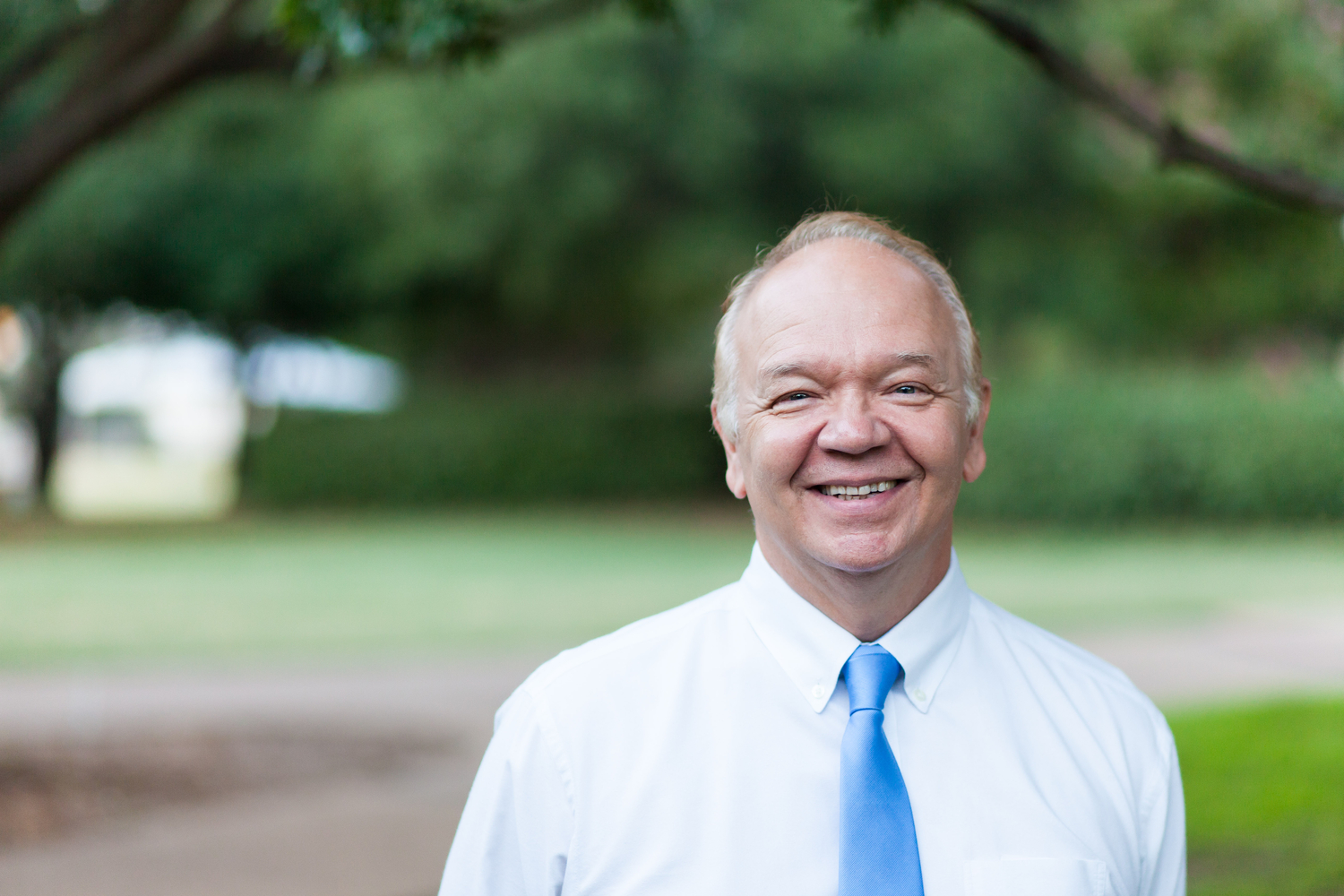
Ask any business major at the University of Dallas what the most memorable project of the program was, and many would mention the Business Practicum. It’s a cornerstone of the business curriculum at the University of Dallas, mandatory for all business undergraduates from 2011 onward.
For years, business students completed the project under the tutelage of longtime faculty member Dale Fodness, PhD, associate professor of marketing. The project and the University of Dallas will both reach a major milestone in December: At the end of 2024, after 26 years with the university, Fodness will retire. He leaves behind a program that grew stronger under his leadership and will continue to remain a distinctive element of the undergraduate business experience at UDallas.
The Business Practicum officially began in the 2009-10 academic year. Professor of Management Brian Murray, PhD, and Nancy Schreiber, PhD, then associate dean of the undergraduate business program, conceived the idea of requiring work experience as part of the curriculum. “It was something I experienced in my own undergraduate program, where we completed 800 hours of work,” Murray explains. The goal was to enhance students’ career development, learning and employability through hands-on work experience before graduation.
To satisfy the requirements of the Business Practicum, students must complete a minimum of 400 hours of work. This requirement can be split between two different work locations, but sites where students worked prior to applying for the practicum are not eligible unless the student assumes a new position or role within the same organization. The job must also be approved by the Business Practicum director.
Upon completion of the practicum, the on-site supervisor is required to complete a performance evaluation survey. Students must receive an adequate rating on this evaluation to fulfill the practicum requirements. Once the 400-hour requirement is met, students give a 9- to 10-minute presentation reflecting on their experiences, which is graded by the business faculty.
When the Practicum began, Schreiber and Associate Professor Michael Stodnick, PhD, oversaw its implementation. The first presentations were delivered in 2011.
Fodness took over the Practicum in 2017. Under his leadership, the program flourished.
“He worked with many more students than we initially did,” Dr. Stodnick recalls. “When the program started, we would see about 30 presentations a year. Now, we see over 75.”
Fodness also introduced several key improvements. Instead of receiving feedback solely from professors, participants now receive feedback from fellow students. “We found that students care more about what their peers thought about them than what their professors thought,” Fodness shared. Additionally, over his time as Business Practicum director, Fodness worked with students who had an interest in being entrepreneurs. Instead of requiring feedback from a boss, as in a typical internship, Fodness would request feedback from their customers.
The COVID-19 pandemic also brought changes to the Practicum experience. Fodness adapted the oral presentation to a video format to accommodate remote learning. The video presentation requirement has proven a lasting benefit, challenging students to strengthen their public speaking skills in both live and digital formats.
Reflecting on his time as director, Fodness humbly passed on all praise to his fellow faculty members.
“I kept things going and upheld the rules of the Practicum, but Sheila Howard did everything else, including building relationships with the students,” Fodness said.
Howard, assistant dean of undergraduate business programs, emphasized that students must secure their internships themselves.
“This is a strength of the program,” Howard noted. “There are some students who fear that they would never be able to find a full-time job upon graduation, and it gives them a lot of confidence when they are able to book an internship themselves.”
Throughout the years, the core structure of the Practicum presentation has remained constant. Students must address the following questions:
- What did you do?
- What did you learn?
- Were there any courses that helped you during the Practicum?
- Were there any ethical situations you encountered, and how did you handle them?
Fodness and Howard also reflected on how many students credit their business classes for helping them, though many also highlight the value of the ethics and philosophy courses they took, which assisted them in navigating their internships.
Murray, who was instrumental in creating the Practicum, will return to the program’s helm after Fodness retires. Fodness leaves behind a lasting legacy, and the university wishes him a long and relaxing retirement.


